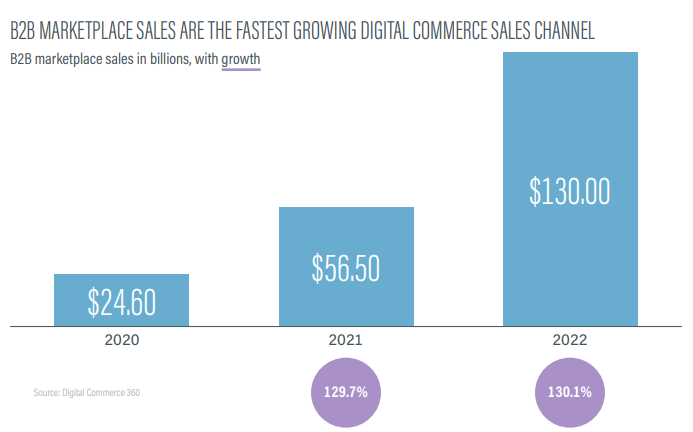
- Posted on
- • October 23, 2019
- Articles
- News

The automotive market is shifting into high gear. By 2025, global automotive aftermarket demand is predicted to exceed 1 billion units. With increased digitization, evolving technology, and changing customer expectations, the industry holds both opportunities and challenges for auto parts retailers to consider.
Is your auto business equipped for the future of automotive retail? In this article, we’ll get up to speed with the trends and changes impacting the industry and uncover what automotive retailers need to know to ensure their business thrives for the long haul.
Advanced Features Need Advanced Support
Technological advances will change the very makeup of automotive vehicles. As the number of aging cars on roads increases and demands for better fuel economy and safety rise, the field is ripe for retailers to introduce new parts and accessories to their product catalogs.
At the same time, the advent of web-connected cars, electric vehicles, and self-driving cars could increase service costs and make the services proprietary to original manufacturers. This could provide opportunities for retailers to offer future-forward services like remote diagnostics and virtual repair. With nearly half of all drivers wanting service to be integrated seamlessly into their lives, it would be wise to make these capabilities their top priority.

Omnichannel is Key to Success
While automotive consumers do most of their research online, many still prefer the convenience and human element of in-person experiences, especially from retailers who have both physical and online locations. Rather than operating in different lanes, online-only automotive retailers have the opportunity to partner with physical manufacturers, suppliers, and service providers to deliver a “bricks and clicks” experience.
An example of this in action would be an auto part retailer providing targeted website content to engage buyers, but then connecting them to in-person centers for test drives and purchase completions. In this case, both the retailer and physical center benefit from tapping into each other’s networks and creating a seamless experience for buyers.
In 2019, shoppers are predicted to spend $11 billion on performance parts alone—many through brick-and-mortar stores. In addition, the number of “do it for me” (DIFM) consumers is rapidly outgrowing “do it yourself” (DIY) buyers. In order to capture this growing demographic, retailers will need to develop a friction-less omnichannel strategy.
Shoppers Expect Speed, Price, and Service
Price and availability impact 2 out of every 3 automotive purchase decisions. To thrive in the future of automotive retail, retailers will need to leverage an efficient supply chain. The rise of IoT supply chain technology will allow brands to offer timely experiences like automatic repair and maintenance, part-ordering, and predictive inventory to satisfy this “just-in-time” need.
As Amazon continues to expand into selling auto parts to the B2B market, auto retailers will also need to sharpen their focus on offering rapid delivery and competitive pricing, providing expert service, and making partnerships with retail partners and manufacturers. A combined B2C and B2B platform will serve as a profitable tool for sellers to serve both markets.

Conversational Marketing is the Best Pickup Line
The modern automotive consumer wants to be entertained, delighted and engaged at every turn—they’re looking for reciprocal (not just transactional) relationships with brands. Automotive retailers can pull ahead from the competition by providing services such as live video, one-to-one conversations, curated recommendations, and personalized assistance.
Retailers can also harness disruptive technology like artificial intelligence, voice control, mobile apps, and big data to collect customer insights. This will allow them to make valuable predictions, create more effective marketing campaigns, and further deepen their personal relationship with customers.
Shoppers Expect an Engaging Automotive Ecommerce Experience
As shoppers become more and more digitally savvy and buying auto parts online increases, retailers will need to challenge themselves to provide experiences that help shoppers feel the excitement of adding automotive parts to their vehicles.
Videos that visualize the performance boost of certain part installations and VR experiences that allow speed testing or test-driving are examples of features that provide a personal and immersive retail experience.
Retailers who can generate desire, knowledge, and confidence around the products they sell online will be a better position for success in the future.

Prepare for the Future of Automotive Retail
The future of the auto parts industry will place buyers in the driver’s seat. As more competitors fill the market, it will be crucial for your business to create value at every stage of the customer journey.
An improved supply chain, compelling user experiences, new technology, and a smooth online to offline transition will help link consumer intent with purchasing action. By putting customer engagement and digital technology at the center, retailers will be able to shape the automotive landscape to their advantage.
For a deep dive into what it takes to build a successful online auto parts store, check out The Ultimate Automotive eCommerce Guide.






